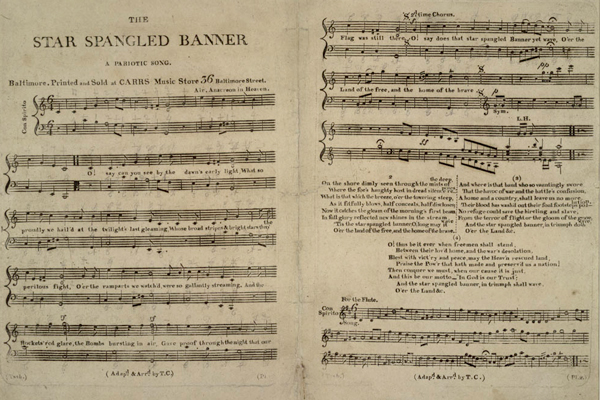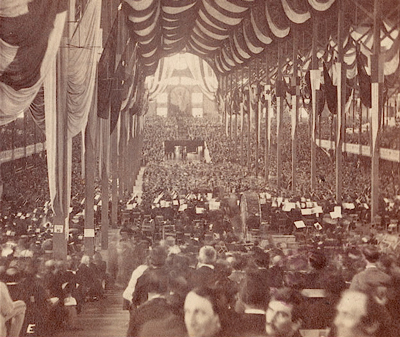by Daniel Hathaway
 CWRU music professor Ross W. Duffin has made his name as a scholar in several fields, among them, fifteenth-century Franco-Flemish music, English music of the Jacobean period and the study of historical tuning systems.
CWRU music professor Ross W. Duffin has made his name as a scholar in several fields, among them, fifteenth-century Franco-Flemish music, English music of the Jacobean period and the study of historical tuning systems.
Recently, though, he’s become fascinated with early American music, a subject he’ll explore with the professional singers of Quire Cleveland in “The Land of Harmony: American Choral Gems from The Bay Psalm Book to Amy Beach,” to be presented at Christ Episcopal Church in Shaker Heights on Saturday, April 5 at 7:30 pm and repeated at Historic St. Peter’s Church in downtown Cleveland on Sunday, April 6 at 4 pm.
It all started when Duffin added early American carols by William Billings to Quire’s Christmas carol programs. “The singers mentioned how much they enjoyed that repertory,” Duffin said on the phone, “Billings just permeates you for hours afterward. It’s infectious music, primitive by European standards, but the directness of emotion is wonderful for singers and audiences.”
Billings led Duffin to explore other early American choral artifacts. “I started collecting. It turned out to be a fun project. There are so many unknown pieces that deserve to be known.”
The program begins with a piece everybody thinks they know, The Star-Spangled Banner, but Duffin has news for you about that. Our National Anthem was invented in 1814 when Francis Scott Key’s verse was set to the tune of a three-voice British glee by John Stafford Smith, To Anacreon in Heaven, but Duffin noted that “there are no choral arrangements of it until the mid-nineteenth century. And to my surprise, there are four stanzas in the original.” Duffin made a new four-part choral arrangement drawing both on a solo song version with accompaniment and the original glee, and in good time for the anthem’s 200th Birthday on September 12. His arrangement will be available for download from a University of Michigan website dedicated to “Star-Spangled Banner Day”. And you can hear Quire sing all four stanzas of the song this weekend.
Another surprise Duffin happened across was an 1869 National Peace Jubilee in Boston organized by the Irish bandleader Patrick Gilmore to commemorate the end of the Civil War. “The centerpiece was a Hymn to Peace commissioned from Oliver Wendell Holmes — they wanted Longfellow but he was abroad — and set to music by a German composer, Matthias Keller. It was performed by 10,000 singers and a thousand-member orchestra (below). Only a single copy of the music survives at Brown University.” The piece will be more modestly but perhaps no less thrillingly presented this weekend by Quire’s twenty-one singers.
Another surprise was lurking closer to home. In digging around a Library of Congress choral music site, Duffin came across one Patty Stair, a Cleveland native and Hathaway Brown School alumna who was active in many local musical circles. “She was a buddy of Adella Prentiss Hughes and taught at the institutions that later became CIM and CWRU. She wrote beautiful, charming choral music. We’ll be singing two of her pieces, one for women’s voices and one for men.”
Also on the program is a pair of psalms from the Puritan Bay Psalm Book, the first book published in the British colonies; the original, three-voice version of Amazing Grace from 1847; Stephen Foster’s Come, where my love lies dreaming, which Duffin notes was written after his mother died and was played by a band when Foster himself passed on; R. Nathaniel Dett’s Don’t be weary, traveler, “which uses the commonplaces of the spiritual in a very sophisticated way”; and works by Mrs. H.H.A. (Amy) Beach (the first woman to join ASCAP), Dudley Buck and Edward MacDowell — the latter writing for some unexplained reason under the pseudonym of Edgar Thorn.
The program that has resulted from Duffin’s research is both historically interesting and musically engaging. “There were so many discoveries,” Duffin said. “The settings are absolutely charming. It’s neat that we found these pieces, and even neater that it all turns out to be wonderful music.”
Published on ClevelandClassical.com April 1, 2014
Click here for a printable version of this article.





